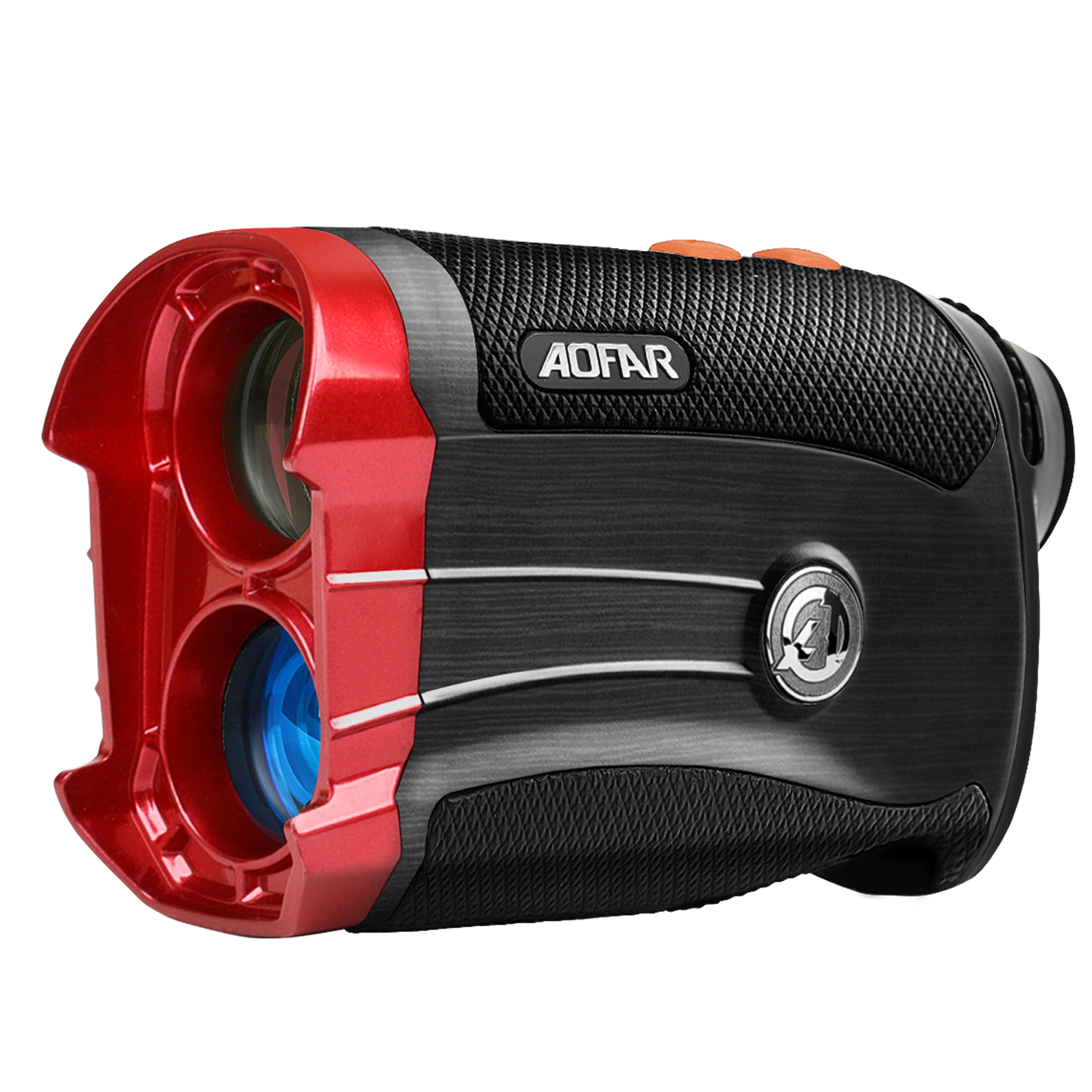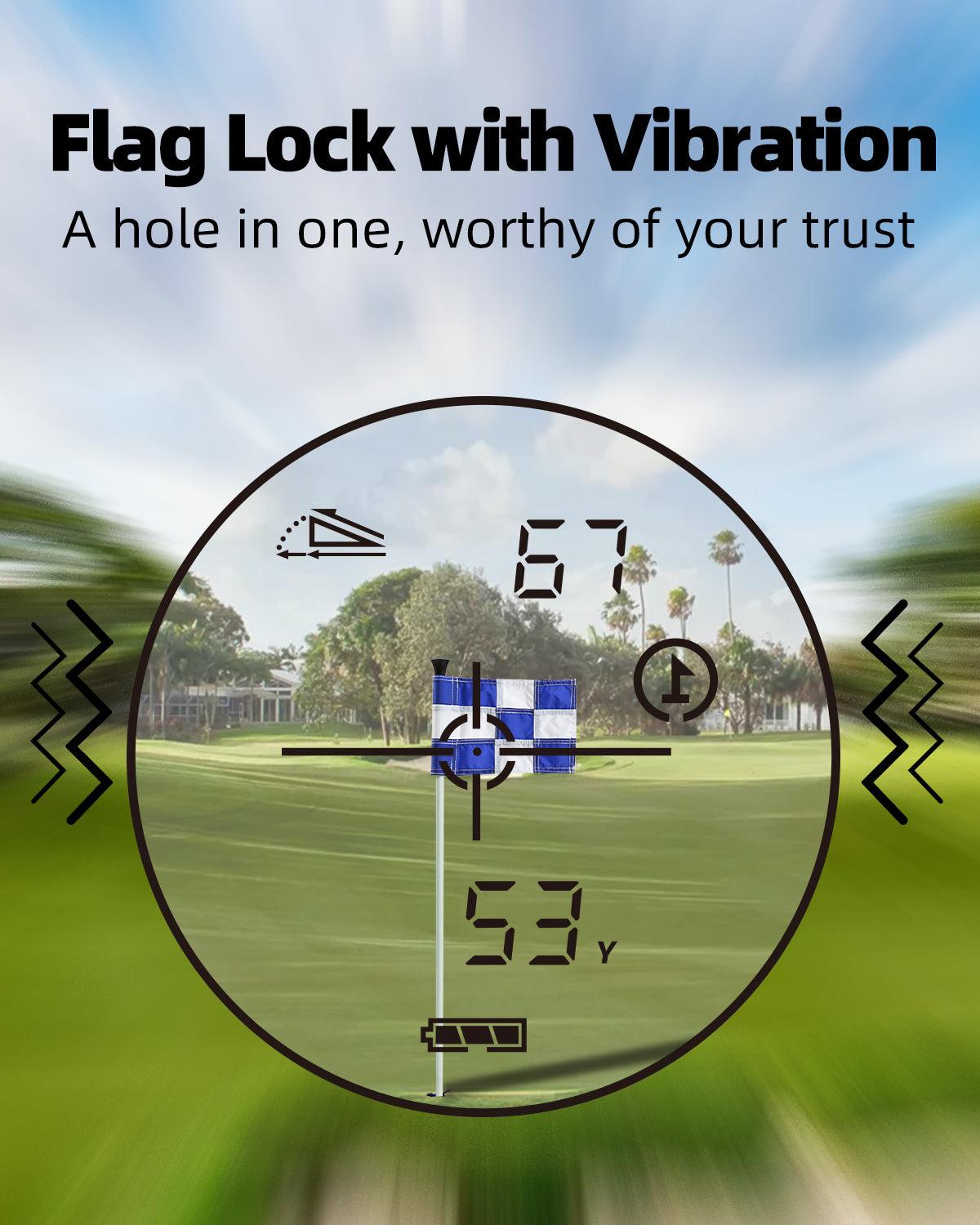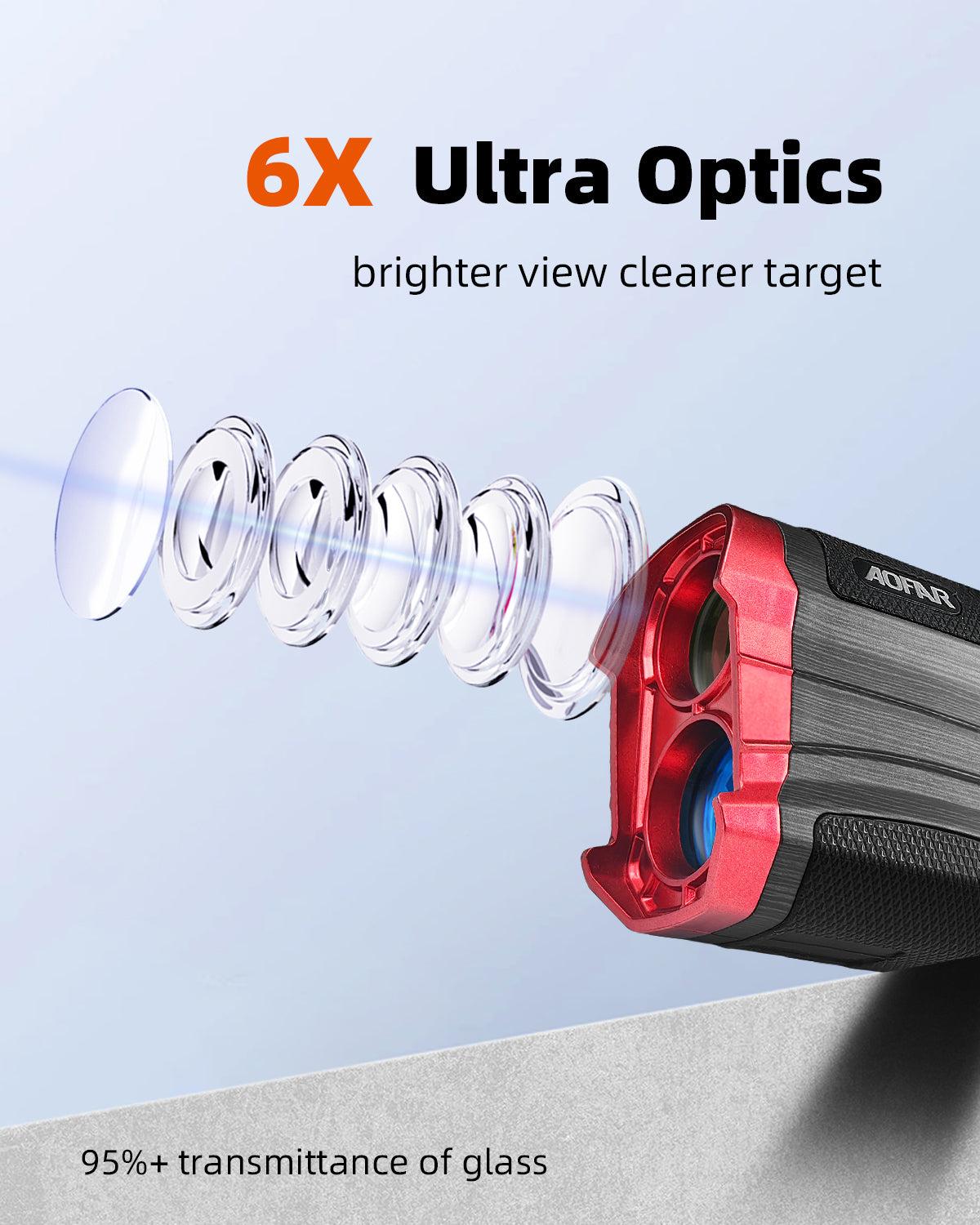How to Use a Golf Rangefinder for Accurate Shots
Share

A golf rangefinder can improve your game by showing exact distances. This tool removes guessing, helping you pick the right club and play better. New rangefinders are accurate within ±1 yard, giving precise measurements for every shot. Many golfers say they lower their scores by 2-4 strokes using a rangefinder.
Exact distances help you avoid mistakes caused by guessing.
Over time, you can learn how far each club hits.
Many beginners miss greens because they guess distances wrong, but a rangefinder can help.
With a golf rangefinder, you can plan each shot with confidence and skill.
Key Takeaways
A golf rangefinder shows exact distances, helping you pick the right club and avoid errors.
Practice with your rangefinder at home to save time and play better.
Use slope mode to adjust for hills. This can improve your shots by 10-15% on hilly courses.
Hold your hands steady while aiming to get accurate readings and play well.
Clean the lens often and check the battery to keep it working properly.
How a Golf Rangefinder Works
Laser Rangefinders and Their Functionality
Laser rangefinders use lasers to measure distances very accurately. They send a laser beam to the target and measure how long it takes to return. This tells you the distance between you and the target. Some models, like the Callaway iQ, are accurate within 0.1 yard, making them great for precise shots.
Laser rangefinders often have pin-seeking technology to focus on the flagstick. This feature ignores other objects and gives correct readings. Many also have magnification, usually between 5x and 7x, to help you see faraway targets better. But your technique matters too. Holding the rangefinder steady and aiming correctly improves accuracy.
GPS Rangefinders and Satellite Technology
GPS rangefinders use satellites to measure distances on the golf course. They receive signals from satellites to find their location. Then, they calculate distances to places like the pin, hazards, or landmarks. Unlike laser rangefinders, GPS models don’t need you to aim at a target.
This makes GPS rangefinders easy to use for quick distance checks. They are helpful on courses where visibility is poor or the flagstick is hard to see. Using satellite data, GPS rangefinders give reliable measurements to help you plan your shots better.
Key Features That Improve Accuracy
Certain features make golf rangefinders more accurate. Slope technology adjusts distances for uphill or downhill shots. Weather resistance keeps the device working well in rain or fog.
Other features include bright OLED screens for sunny days and fog mode for bad weather. Some advanced models even adjust for wind, but this feature must be turned off during tournaments. These features help you find targets and make smart choices on the course.
How to Use a Golf Rangefinder
Getting Your Rangefinder Ready
Make sure your rangefinder is ready before playing golf. Charge it fully the night before to avoid interruptions. A low battery can ruin your game. Wipe the lens with a soft cloth to remove dirt or smudges. Check the battery level and replace it if needed. Set the device to your liking, like choosing yards or meters.
Practice using your rangefinder at home. Learn how to turn it on, aim, and read the screen. This practice will save time during your game. Keep it in an easy-to-reach spot, like your pocket or golf bag. Pre-set features like slope mode so you can focus on your shots instead of adjusting settings.
Aiming and Keeping Steady for Better Results
Hold the rangefinder steady with both hands to avoid shaking. Point it at your target, like the flagstick or a hazard. Look through the viewfinder and center the target in your sight. If your rangefinder has pin-seeking, use it to focus on the flagstick and ignore other objects.
Take a deep breath and slowly exhale to steady your hands. Practice aiming often to get better at it. For faraway targets, use the zoom feature to see more clearly. Good aiming skills help you get faster and more accurate readings, saving time and improving your game.
Using Slope and Standard Modes
Knowing slope and standard modes is important for better play. Slope mode changes the distance based on hills or slopes. For example, a downhill shot might play shorter than the actual distance. This helps you pick the right club and make better shots.
Standard mode gives straight distances without thinking about hills. It is allowed in tournaments and works well on flat courses. Use slope mode during practice to learn how hills affect your shots. Studies show slope mode improves accuracy by 10-15% on hilly courses. Switching modes helps you adjust to different courses and improve your strategy.
Interpreting Distance Measurements
Knowing how to read distance measurements is very important. A rangefinder works by sending a laser to the target. It measures how long the laser takes to return. This gives you an accurate distance if you aim well.
To get better results, aim at the biggest part of your target. If the flagstick is hard to see, aim near it. Don’t aim at trees or bushes in front of the target. These can confuse the rangefinder. Keep your hands steady and hold the device with both hands.
Some rangefinders have Flag-Lock technology to confirm the target. This feature ensures you get the correct distance. If your rangefinder has slope mode, it adjusts for hills. This is useful on courses with uphill or downhill shots.
Look at the display to understand the readings. Some devices show extra details like slope-adjusted distances or angles. Use this information to pick the right club. For example, if the slope-adjusted distance is shorter, use a lower club.
Practice aiming and learn your rangefinder’s features. This will help you measure distances confidently. Remember, accuracy depends on both the device and how you use it.
Tips for Accurate Use of a Golf Rangefinder

Practicing Aiming Techniques
Getting better at aiming is key to using your rangefinder well. Practice holding it steady with both hands. Keep your elbows close to your body to stop shaking. This helps you aim at your target more easily.
For important shots, take a few readings. Average the numbers to get the most accurate distance. Don’t rush when aiming, especially during tough moments. Take your time to focus on the flagstick or hazard for the best results.
Keeping your rangefinder clean also helps with accuracy. Wipe the lens gently with a soft cloth to remove dirt. Check the battery before every game so it doesn’t die mid-round. Following these tips will help you play better and hit more accurate shots.
Leveraging Slope Mode for Elevation Adjustments
Slope mode is very helpful on courses with hills. It adjusts the distance by including the effect of slopes. For example, a 150-yard uphill shot might feel like 165 yards. A downhill shot of the same distance might feel like 135 yards. Knowing this helps you pick the right club for your shot.
Advanced slope features measure how steep the hill is. They show both the actual and adjusted distances. This is great for courses with big elevation changes. Use slope mode during practice to learn how hills affect your shots. But remember, you can’t use slope mode in tournaments. Switch to standard mode for competitive games.
Avoiding Common Mistakes
To use a rangefinder well, avoid common errors. One mistake is not learning how to use it first. Spend time understanding how your device works. For GPS models, turn it on and select your course for accurate distances. For laser models, aim carefully through the eyepiece and lock onto your target.
Another mistake is aiming at the wrong thing. Always aim at the biggest part of your target, like the flagstick or a marker. Don’t aim at trees or bushes, as this can give wrong readings. Also, know how far you hit each club. This helps you make smarter choices based on the rangefinder’s yardage.
By practicing these tips and avoiding errors, you can get the most out of your rangefinder and play better golf.
Keeping Your Hands Steady
Keeping your hands steady is very important for accurate readings. Even small shakes can make the laser miss the target. This can give you wrong distance numbers. By practicing, you can hold the rangefinder steady and use it better.
Hold the rangefinder with both hands to stop shaking. Aim a little below the target first, then move up to lock on. This makes it easier to focus. Stand with your feet apart, about shoulder-width. Bend your knees a little to stay balanced. This helps keep your body still.
To stay steady, keep your elbows close to your sides. Hold the rangefinder like you’re cupping it for better control. Some golfers rest it against their cheek for extra support. If it’s windy or the ground is uneven, lean on something nearby. Use a golf cart or tree to help you aim better.
Practice these steps often to get more accurate readings. A steady hand gives you better results and more confidence. The steadier you are, the more reliable your rangefinder will be. Take your time, stand properly, and follow these tips. With practice, your skills and game will improve.
Choosing Between Laser and GPS Golf Rangefinders
Advantages of Laser Rangefinders
Laser rangefinders are great for golfers who need accuracy. They measure exact distances to targets like flagsticks. These devices work well on uneven courses or where GPS struggles.
Here’s a list of their benefits:
Advantage |
Description |
|---|---|
Precision |
Gives exact distances to targets like flagsticks. |
Slope Technology |
Adjusts for hills, helping you pick the right club. |
Improved Accuracy |
Helps you choose clubs better, lowering your score. |
Faster Decision-Making |
Saves time by quickly measuring distances. |
Enhanced Course Management |
Measures hazards and features for smarter planning. |
User-Friendly Design |
Small and simple to use for all golfers. |
Laser rangefinders are perfect for serious golfers. They give precise readings, helping you pick the best club for each shot.
Benefits of GPS Rangefinders
GPS rangefinders make golf easier by showing the whole course. They use satellites to measure distances to greens, hazards, and flagsticks. Unlike lasers, GPS models don’t need aiming, making them quick to use.
Benefit |
Description |
|---|---|
Accuracy |
Gives steady, accurate distances for better club choices. |
Performance Tracking |
Links with apps to track how far you hit each club. |
Other benefits include:
Learning how far your clubs really hit for better play.
GPS rangefinders are great for golfers who want to see the course layout. Pre-loaded maps let you focus on strategy, not guessing.
Factors to Consider When Selecting a Rangefinder
Picking the right rangefinder depends on what you need. Think about these points before buying:
Factor |
Description |
|---|---|
Steadiness |
Important for shaky hands to lock onto targets easily. |
Slope |
Adjusts for hills but must turn off for tournaments. |
Accuracy & Range |
Should be accurate within one yard and work up to 400–1,300 yards. |
Target Acquisition |
Quickly locks onto targets even with distractions around. |
Optics |
Clear lenses help you see better in different lighting. |
Slope Measurement |
Useful for hilly courses but must follow tournament rules. |
If you play in tournaments, choose a model with slope you can turn off. For casual games, look for easy-to-use features and good course coverage. By thinking about these factors, you can find a rangefinder that fits your game.
A golf rangefinder helps you play better and hit accurately. Many golfers say it helps them choose clubs and score lower. Research shows players improve by 2-4 strokes, especially from 100-175 yards.
Practice often to learn how to use your rangefinder well. Over time, you’ll plan shots wisely and make better choices. This tool can boost your skills and help you enjoy golf more.
FAQ

What is the difference between slope mode and standard mode?
Slope mode changes distances for hills, like uphill or downhill shots. Standard mode shows straight distances without thinking about slopes. Use slope mode in practice to learn about hills. For tournaments, switch to standard mode since slope mode isn’t allowed.
How do I clean my golf rangefinder?
Clean the lens with a soft microfiber cloth. Don’t use strong chemicals or rough materials. Wipe gently to remove dirt or smudges. A clean lens helps you get accurate readings and keeps your rangefinder working longer.
Can I use a golf rangefinder in tournaments?
Yes, but only in standard mode. Turn off slope adjustment because it’s not allowed in tournaments. Always check the rules to make sure your rangefinder is okay to use.
How do I stabilize my hands while using a rangefinder?
Hold the rangefinder with both hands and keep elbows close. Stand with feet shoulder-width apart to stay balanced. Breathe in deeply, then exhale slowly to stop shaking. Practice these steps to aim better and get more accurate readings.
What should I do if my rangefinder gives inconsistent readings?
Check the lens for dirt and clean it if needed. Make sure the battery is charged or replace it if it’s low. Aim carefully at the right target, like the flagstick, to avoid mistakes. If it still doesn’t work, read the manual or contact support.



